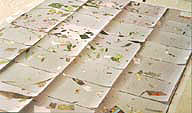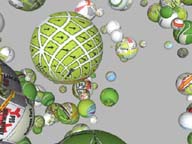|
(click on image to enlarge)
|
|
With this work, I propose a re-construction of a city map of Vienna
(the city where I live and inter-act). The order of the map is questioned,
not with a destructive claim (everybody needs a map!) but in order
to assess the limits of a representative structure. The city is viewed from
a dynamic point of view, not as a fixed „given” space -
as the construction of a map implies - but as a web where an infinite
number of processes take place. A space in which various circulations
arise, and are subsequently disentangled or reshaped, circulations
that cannot find a place within an aprioristically defined system,
the „striate space” of a bi-dimensional Cartesian representation.
Circulations that account for the construction of a space organized
by forces of various intensities, more than by forms, shapes or configurations
(crf. Deleuze Guattari, 1997, 658-674.) Circulations by which miscellaneous
areas of the city may form temporary attractions. (associations between
city areas might be due to an analogous evolution, but also due to
time – space connections drawn by the citizens themselves, by
their way of living, their habits and reference places). Deleuze G., Guattari
F., Tausend Plateaus, Kapitalismus und Schizophrenie, aus dem Franz
von G. Ricke und R. Voullié, Berlin 1997
|


